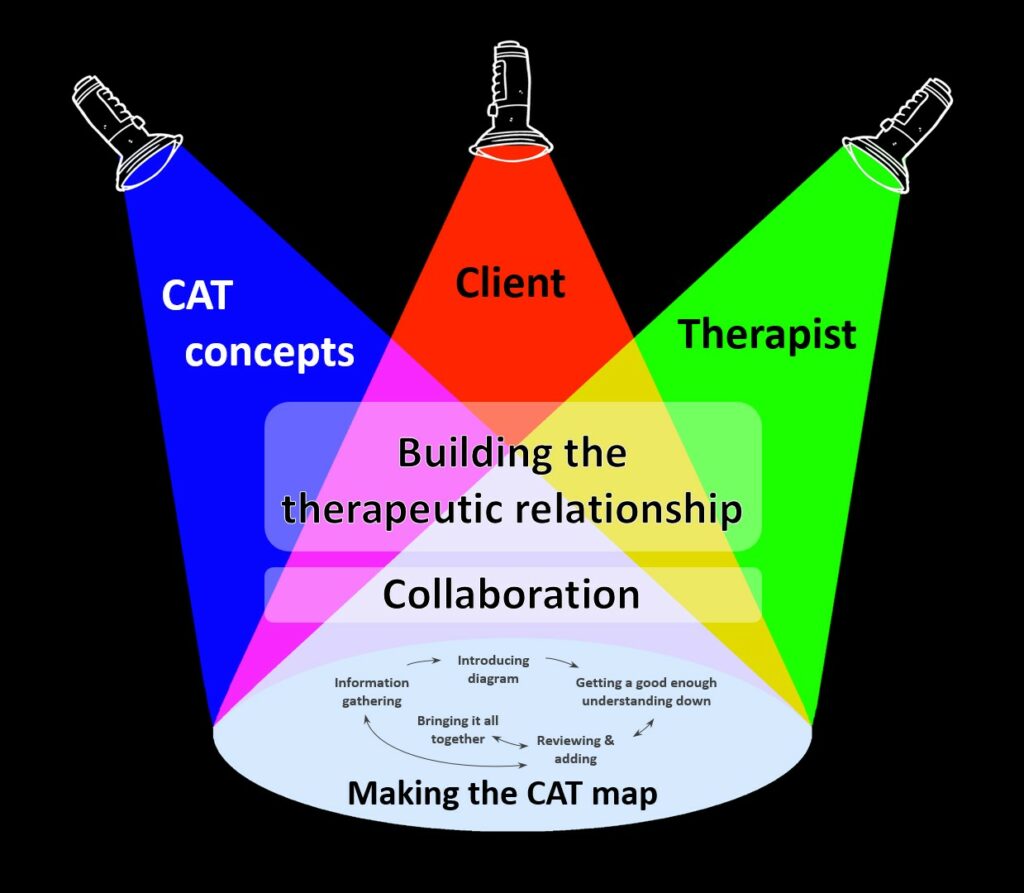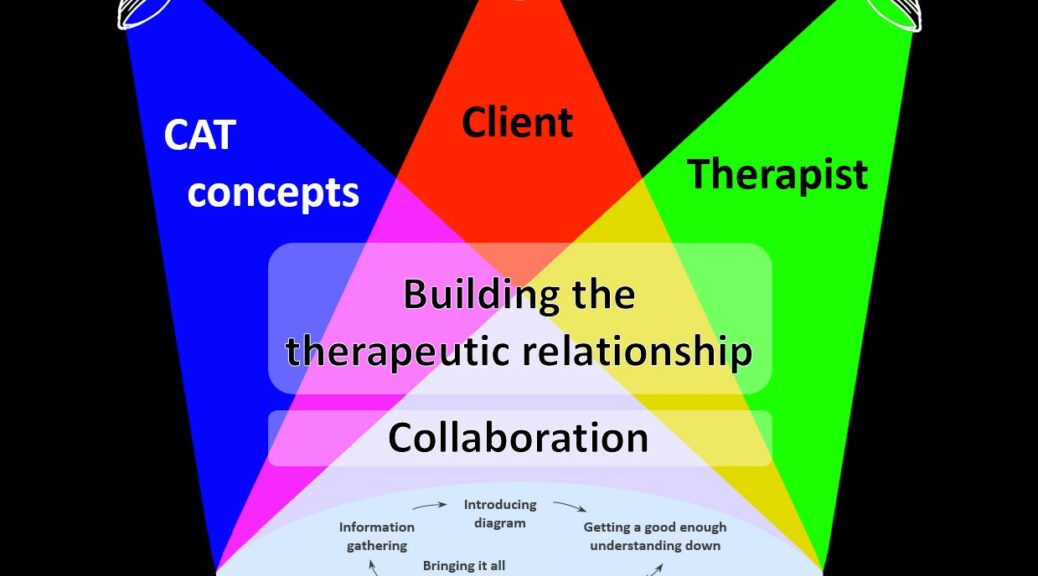In this blog, CAT practitioner , supervisor and trainer Steve Jefferis describes a research study about the process of making a CAT map or diagram.
Introduction
In CAT, the map is often at the heart of therapy. By drawing out on paper the repeating patterns that seem to keep problems going, the therapist and client can look together at what is going on. Ultimately they can use it to help find ways of doing things differently.
My research colleagues and I were interested in how these “maps” get made. We noticed that there were only guides for therapists of how to do it. We couldn’t find any research asking what do therapists and clients actually do when mapping? So we tried to find out.
Watching therapists at work
Having looked at different ways of asking the question, we decided to set up a role play. Experienced CAT therapists would work with an actor playing a client. In this role play of a first CAT session, therapist and client drew out a simple map together. The researcher then watched a video of the session with the therapist while they described what they were doing. They talked about
- why and how they started the map
- how they used the client’s feedback
- how they tailored it to the individual, and
- how they hoped the map could be used to help the client in therapy
We looked in great detail at what the therapists said. Through this we came up with a model of how maps are made: the “Torchlight” model. Afterwards, we asked the therapists for feedback and they helped us to improve the model further. This method of researching gives us a glimpse into what actually goes in in the room when mapping is taking place. Our hope is that this model is helpful for therapists learning how to map with CAT. We hope the model also gives a research basis for how CAT therapists do mapping in their work.
The “Torchlight” model of mapping

The “torchlights” give us a way of understanding what is going on when client and therapists make maps. We heard about the different perspectives, knowledge and experience both people brought to the encounter. It’s as if they bring different coloured “lights” that start to mix when the process gets underway. Furthermore, CAT itself brings a new light to the encounter – the third element of the process.
The research showed us about how central the relationship between client and therapist is to the whole process. Mapping can only happen when there is a “good enough” relationship, but mapping also helps to build that relationship. Making maps is a process of collaboration. Therapists use clients’ words for their experiences, to try to get a “shared language”. They then put them down on paper, seeing if it feels right together. The therapists also tried to tune in to “where the client is at”. This includes going at the right speed, giving some guidance, but not imposing their own views on the map.
The actual process of mapping was a cycle that takes place as the three “lights” come together from the client, the therapist and CAT. First, therapists wanted to hear about clients’ experiences, and then started to introduce the idea of drawing a diagram together. They tried to “get the ideas down on paper” at an early stage, even if they weren’t quite right yet. Reviewing those ideas with the client, adding and changing them to get a description that fitted, was the next step. Then therapists would try to bring all the ideas together and join them up on the map. However they would continue to review and develop the map as the sessions proceed.
What have we learned?
This research project was the first to look at what happens in the room when clients and therapists map together. It gives some evidence to back up CAT therapists’ claims about what they are trying to do in therapy. In particular, we found that by mapping together therapists were using the map to help learning take place. The learning focussed around both parties’ understanding of the problems. The dialogue between clients and therapists makes this a joint effort. Depending on the pairing of client and therapist, there were also differences in how the map was made. This means CAT therapists are personalising what they do. Mapping in CAT is not a “one size fits all” process. Therapists also vary in how they handle this task.
Final reflections
There are limits to the conclusions we can draw from this research. This was a role play, so we can’t be sure that the processes are the same in actual therapy sessions. Nor does it tell us how the processes develop as therapy proceeds. Because of the research design we couldn’t ask clients for their view of the process. This is an area that has been researched before by Taplin et al., 2018. However, we did manage to take a close look at the detail of what happens when therapists start to map. Our method was an innovative one. Therapists and clients generally value the mapping process.
This research provides some evidence about how CAT maps are actually made together in the room. It demonstrates that this is through collaboration and the bringing together of different perspectives.
You can see the abstract of the full paper at:
https://bpspsychub.onlinelibrary.wiley.com/doi/abs/10.1111/papt.12311
Jefferis, S., Fantarrow, Z. and Johnston, L. (2020), The torchlight model of mapping in cognitive analytic therapy (CAT) reformulation: A qualitative investigation. Psychology and Psychotherapy: Theory Research and Practice.
Reference
Taplin, K., Greenhill, B., Seddon, C., & McGuire, J. (2018). Service User experiences of CAT Diagrams: and Interpretative Phenomenological Analysis. International Journal of Cognitive Analytic Therapy and Relational Mental Health, 2, 75–96.
How do CAT maps get made? A “Torchlight” model of working together on therapy maps by Steve Jefferis is licensed under CC BY-NC-ND 4.0
